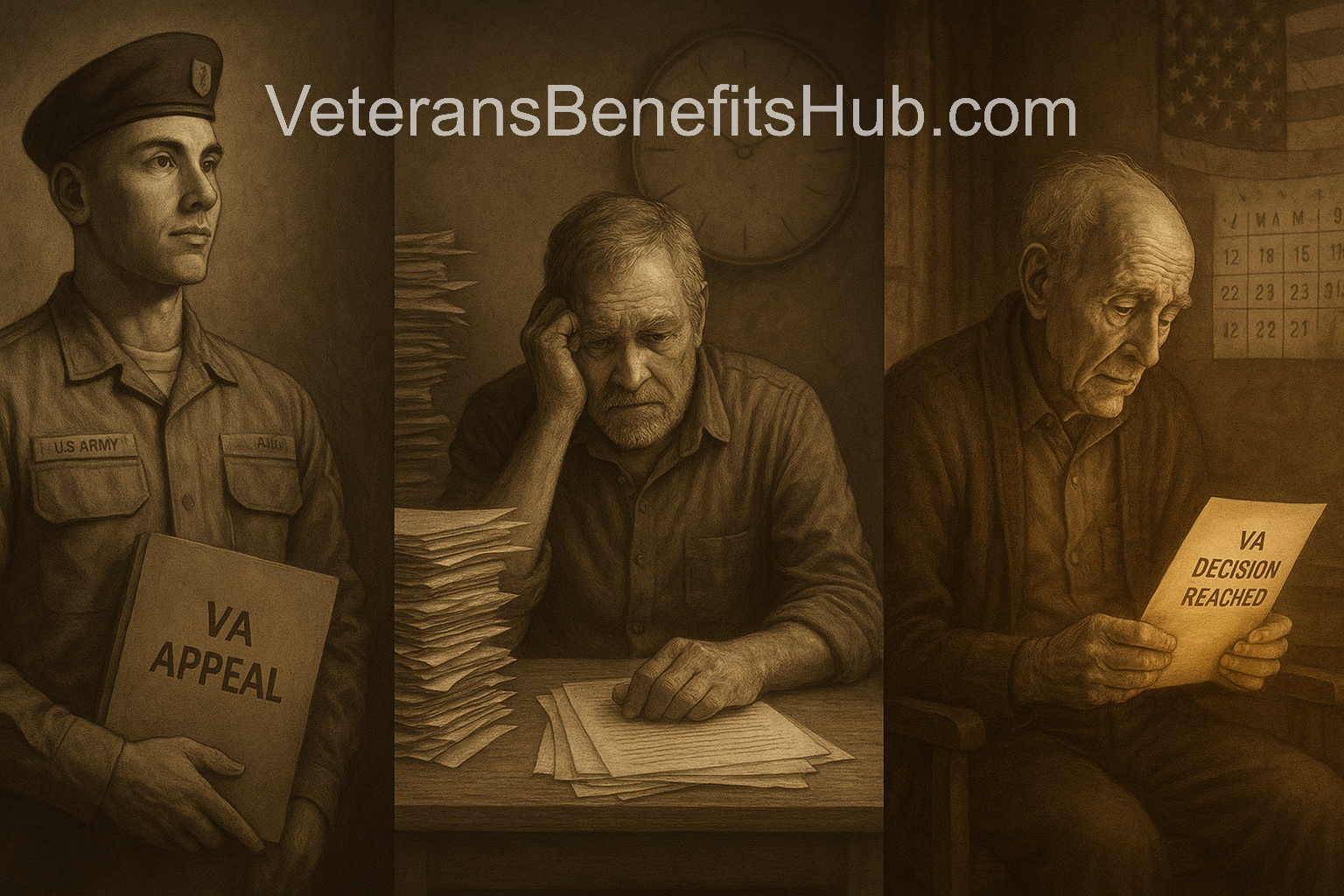
Understanding VA Appeal Timelines: Why Your Claim Might Be Stuck
If you’ve filed an appeal with the Department of Veterans Affairs (VA) and checked its status only to find you’re 75,576th in line, you’re probably wondering: What does this mean, and how much longer will I have to wait? If it’s already been two years, the frustration is real. Let’s break down why VA appeals are taking so long and what you can do about it.
The Appeals Modernization Act (AMA) and Its Impact
In February 2019, Congress passed the Appeals Modernization Act (AMA), which was intended to streamline and speed up the VA appeals process. Before 2019, appeals were considered “legacy appeals,” and they followed an older, slower system. The AMA promised modernization, but the rollout has created significant backlogs.
Here’s the current situation:
- The VA is dedicating 80% of its resources to processing legacy appeals (filed before February 2019). With hundreds of thousands of these claims still pending, progress is slow.
- Only 20% of resources are allocated to AMA appeals (filed after February 2019). Within this group, the VA prioritizes hardship claims—those involving financial hardship or advanced age. This means non-hardship AMA appeals receive minimal attention.
The result? If you filed an appeal in the last four years and don’t qualify for hardship status, your claim is likely stuck in a long queue. The VA has been transparent about this backlog, but that doesn’t make the wait any less frustrating.
Why Is This Happening?
The opinion of many veterans and advocates is that the VA’s system changes, like the AMA, often promise improvements but struggle with implementation. The focus on clearing out legacy appeals, while necessary, has left newer claims languishing. For veterans waiting years for resolution, this feels like a broken promise.
Your Options to Avoid a 5-Year Wait
If your appeal is headed to the Board of Veterans’ Appeals, you could be looking at a five-year wait or longer. To avoid this, consider these alternatives, which are handled at the VA Regional Office and typically resolve faster:
- Higher-Level Review (HLR): Request an HLR if you believe the VA made an error, such as failing to consider evidence or violating its duty to assist. This process doesn’t allow new evidence but can correct mistakes.
- Supplemental Claim: If you have new and relevant evidence, file a supplemental claim. Since VA claims are medical in nature, providing strong medical evidence can often resolve issues without a lengthy appeal.
By using these options, you may resolve your claim sooner and avoid the backlog at the Board. If you win an appeal after years of waiting, you’ll receive back pay, but getting paid now is better than waiting five years for the same result.
Strategies to Move Forward
Many veterans aim to increase their disability rating—say, from 50% to 80% or even 100%. A five-year delay at any stage can derail this goal. Here are some tips to keep your claim on track:
- Submit Strong Evidence Upfront: The best way to avoid appeals is to file a robust initial claim. Programs like veteran boot camps teach how to compile comprehensive medical evidence to support your case from the start.
- Consider Legal Help for Appeals: If your initial claim was denied and you’re in the appeals process, you can hire a lawyer. Lawyers can’t charge for assisting with initial claims, but they can represent you during appeals. Some offer pro bono services, though availability may be limited.
- Stay Proactive: Check your claim status regularly, and don’t hesitate to contact your VA Regional Office for updates. If you qualify for hardship status, ensure it’s documented to prioritize your claim.
The Bottom Line
The VA appeals backlog is a frustrating reality, driven by the slow transition from legacy appeals to the AMA system. While the VA is working to clear older claims, newer appeals often face delays unless they involve hardship criteria. To avoid a five-year wait, explore higher-level reviews or supplemental claims, and ensure your claim is backed by strong medical evidence. If you’re stuck in the appeals process, consider consulting a lawyer to navigate the system.
At VeteransBenefitsHub.com, we’re committed to helping veterans get the benefits they deserve as quickly as possible. Share your experiences in the comments below, and let’s work together to move your claim forward.
Disclaimer: Portions of this article contain opinions based on the author’s perspective and experiences with the VA system. The information provided is for informational purposes only and should not be considered legal or professional advice. Always consult with a qualified professional for guidance on your specific situation.
